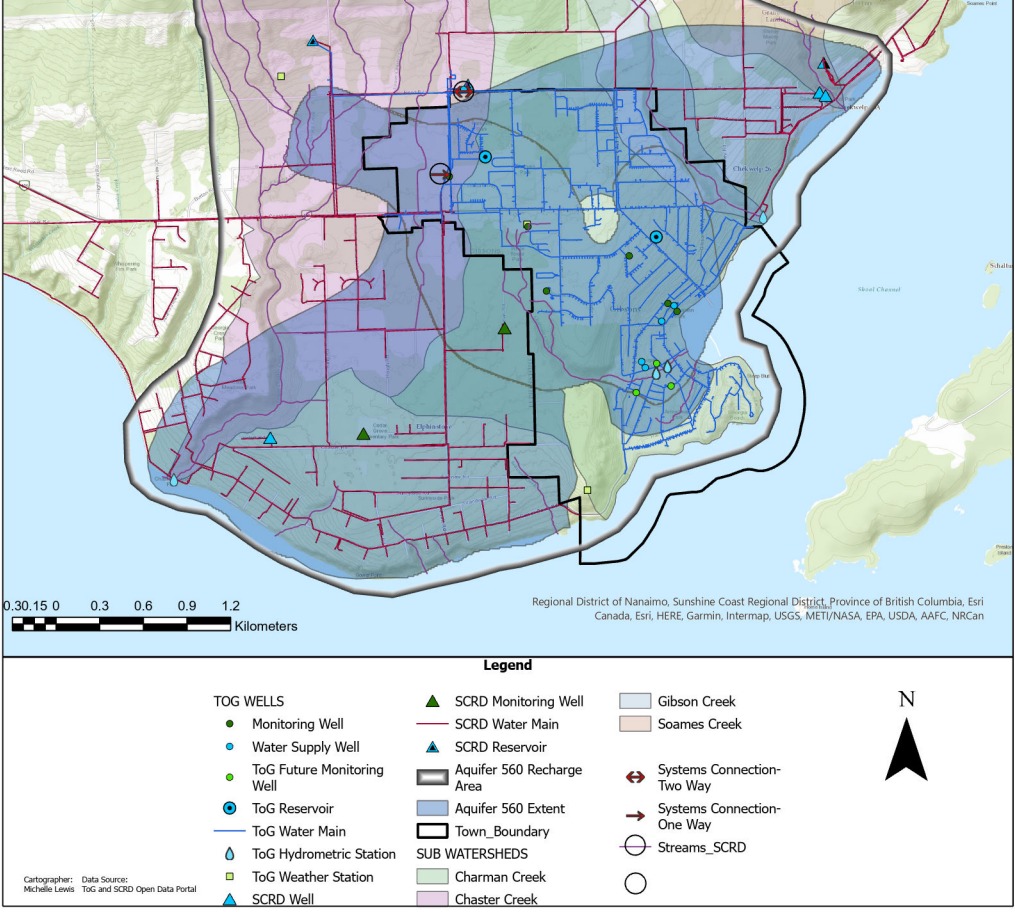The Town relies on groundwater from Aquifer 560, which is pumped from three wells in Lower Gibsons and one well in Upper Gibsons. The components of the water system consist of the wells, pumps, pipes, reservoirs, and meters that move the water from the aquifer to your tap.
Following the recent update of the Aquifer Mapping Study (2021), the Town of Gibsons has comprehensive, current data that shows the Aquifer can supply the community’s water needs, even under more challenging climate conditions.
The Aquifer Mapping Study Update modelled multiple future climate scenarios, including;
- A range of population growth estimates (1.2 to 2.5%)
- A range of water demands: 404/524 liters/capita/day. (Eg. in 2022 consumption was 357 l/c/d)
- Changes to groundwater recharge from precipitation:
- 15% decrease in rainfall
- 30% decrease in snow accumulation, and
- Sea Level rise, which will decrease the available drawdown.
The conclusion was that there is a low risk to the Aquifer from over-pumping associated with the total licensed groundwater volume and for the full buildout water demand, including climate-affected conditions.
The Town has extensive data to understand the movement and cycling of water in the Aquifer and is able to assess the long-term supply under various demand and climate conditions (see above). The Town’s annual monitoring program provides information on water level, water quality and recharging levels, tracking trends year to year.
The Town’s water distribution system monitors pumping volume from each well daily, and the well sensors provide staff with real-time data of the water level at each of the well locations, allowing staff to track changes within the aquifer continually.
Water being delivered to Zones 1 and 2 is usually not chlorinated, however, occasionally the Town must chlorinate the water to protect the health of the community. This usually occurs when work is being done on water mains and there is a risk of impurities entering the water system.
Zone 3 is linked to the SCRD water network, which occasionally supplements the Zone 3 water supply to provide fire flow backup. As a result, Zone 3 water is chlorinated at all times.


